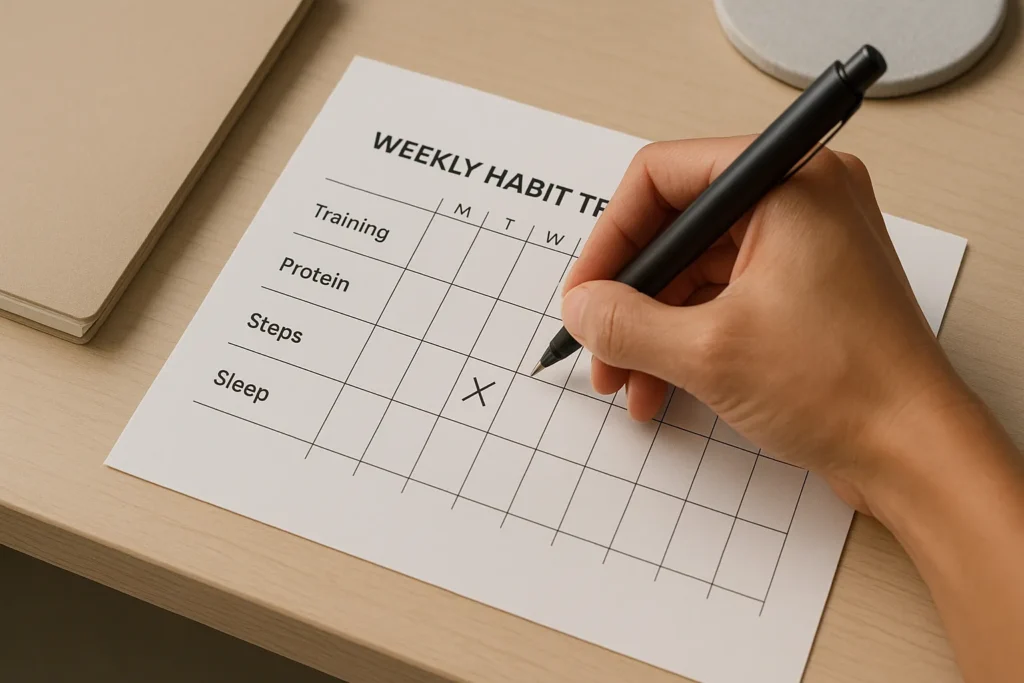Mark Lewis titled his video with a wink: “I Tried The ‘Miracle’ Fat Jab.” The punchline is that nothing about his six-week trial felt like a miracle. It felt like quiet. The relentless food chatter in his head turned down. Snacks lost their pull. Meals tasted better because he arrived hungry, not compulsively hungry. For someone with a history of overeating and an injured, low-training spell, that change was profound.
Before we go further, terms. Ozempic and Wegovy both contain semaglutide. In the UK, Wegovy is licensed for weight loss; Ozempic is indicated for type 2 diabetes, with guidance to protect its supply for diabetes patients. Mounjaro contains tirzepatide, a related medication now recommended by NICE for managing overweight and obesity in adults, with NHS implementation guidance following in 2025.
What Mark actually did
Across six weeks on a low starting dose, Mark reports minimal side effects and a dramatic reduction in “food noise.” He ate smaller portions without white-knuckling cravings, skipped autopilot snacks, and stopped finishing meals with guilt. Weight dropped, but he frames that as a side effect of a calmer mind, not the headline.
What the data says
UK public guidance confirms semaglutide is prescribed via specialist services for weight management, with clinicians expected to discuss benefits and side effects. NICE has also recommended tirzepatide for obesity management, expanding access pathways.

Side effects exist. Common ones include nausea and diarrhoea; rarer risks include gallbladder disease and pancreatitis. These must be weighed against the risks of untreated obesity, and decisions should be made with a healthcare professional.
One concern you will see online is what happens when people stop. Trials and meta-analyses show meaningful weight regain after discontinuation, often around two-thirds of the lost weight within a year, which reinforces that obesity is chronic and ongoing support matters.
Muscle, metabolism and training while on GLP-1s
Another talking point is lean-mass loss during aggressive weight reduction. Resistance training is one of the best tools we have to preserve muscle while losing fat. Recent and classic reviews agree that lifting improves fat-free mass preservation compared with diet alone. Pair the medication, if prescribed, with a progressive strength plan and adequate protein.

If you are training for functional events like HYROX, protecting strength and movement quality is non-negotiable. Our primer on getting ready for your first race covers building an aerobic engine without sacrificing strength. See:
How to Train for Your First HYROX
Our take
Mark is not selling shortcuts. He is reporting that a medication reduced intrusive food thoughts, which helped him act on the habits he already values. That aligns with the clinical framing in the UK: these medicines are tools for eligible adults when lifestyle change alone has not worked, to be used within a structured plan and reviewed for effectiveness and tolerance.
If you and your clinician pursue this path, stack the odds in your favour:
- Keep lifting two to four days per week to protect muscle.
- Hit a protein target that matches your training.
- Track simple behaviours: steps, sleep, hydration, and planned meals.
- Build a taper-off plan with your clinician if you intend to discontinue, because maintenance strategies matter once the food noise returns.

For a complementary perspective on building a more durable body while cutting the noise, read our feature on Eugene Teo’s blend of strength and mobility:
The Hybrid Bodybuilder: How Eugene Teo Rebuilt Strength, Mobility and Power
Watch the video
Mark’s full video is worth your time for context, humour and candid detail: “I Tried The ‘Miracle’ Fat Jab | Ozempic, Wegovy, Mounjaro – Drugs For The Lazy?” on YouTube.
Important note
This article is not medical advice. Discuss suitability, dosing, risks and monitoring with your GP or specialist weight management service. UK access and eligibility are set by NHS and NICE guidance.












